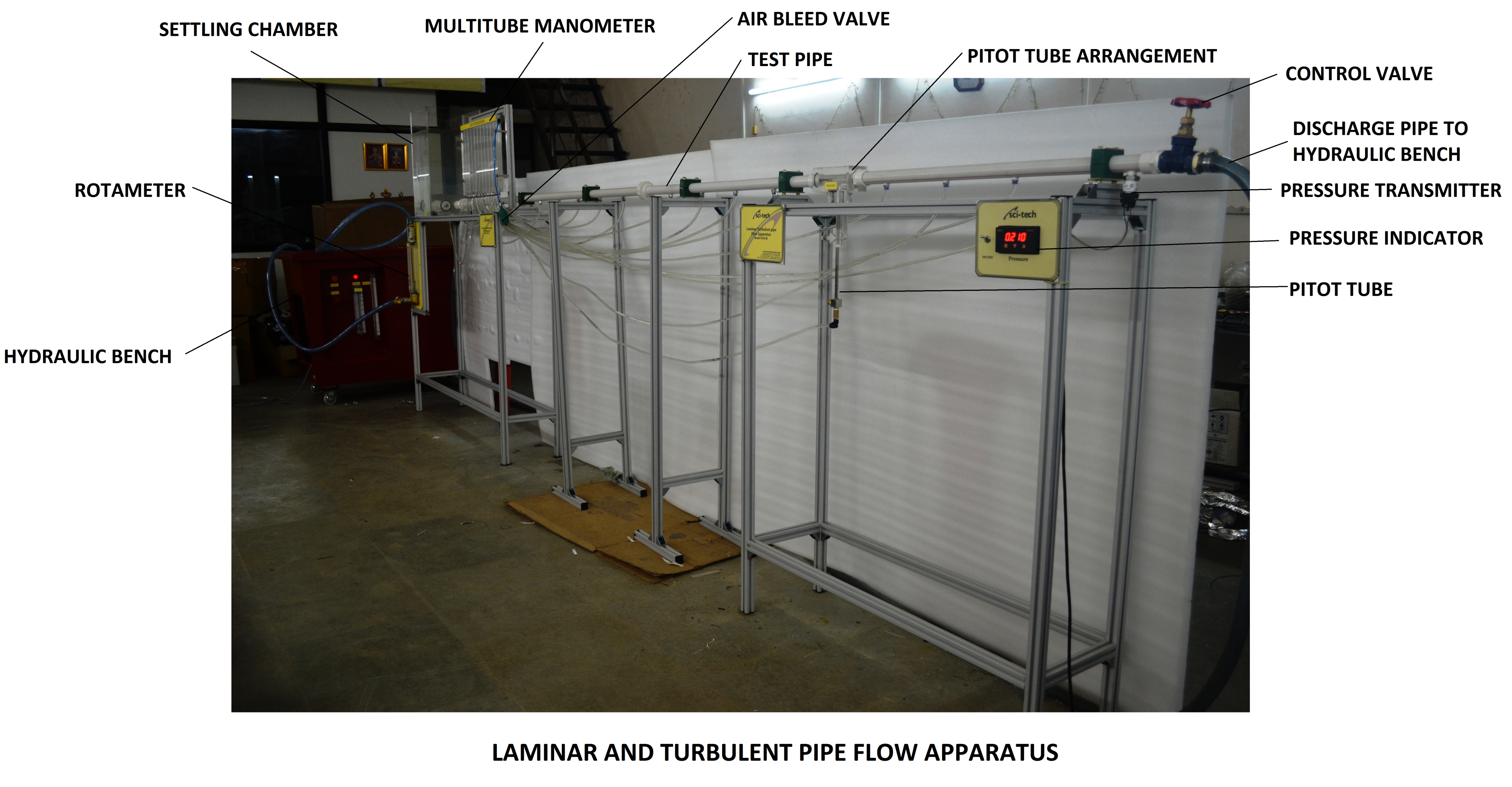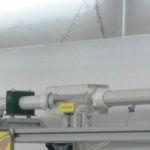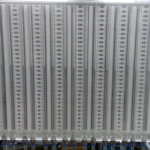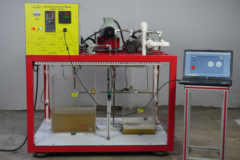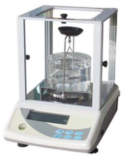Fluid Mechanics: Laminar and Turbulant Pipe Flow Apparatus MODEL GFM 29
Home » Products » Fluid Mechanics: Laminar and Turbulant Pipe Flow Apparatus MODEL GFM 29
Fluid Mechanics: Laminar and Turbulant Pipe Flow Apparatus MODEL GFM 29
Sci-tech Laminar and Turbulent Pipe Flow Apparatus Model GFM 29 is a floor mount unit and has been designed to demonstrate laminar and turbulent pipe flows over a wide range of flow conditions. The apparatus has been designed to enable students to measure loss of pressure head in pipes at various flow velocities or Reynolds numbers. The geometry and flow parameters have been selected to enable studies in the ranges of practical interest. The apparatus is mounted on a supporting table on wheels and is designed for use with the FM 100 Hydraulic Bench or any other suitable controlled water supply and recirculation system. The apparatus consists of settling chamber and bell mouth entry. The settling chamber has screens to damp any disturbances in the flow. The passage of flow through the settling chamber and the bell mouth entry ensures minimum flow disturbance at the pipe entry. Flow velocity in the pipe or Reynolds number can be varied using flow control valves and laminar and turbulent pipe flow can be obtained. Static pressures along the pipe wall are measured using pressure tapings at regular intervals. Mean flow velocity profile is measured using a Pitot tube traversed by a micrometer. Flow velocity is measured using variable area flow meter and the measuring tank of the Hydraulic Bench. Pressures are measured using multi- tube water manometer and digital pressure meter. All components of apparatus are manufactured using corrosion resistant materials.
| Size: | 200cm x 40cm x 85cm (LxWxH) |
| Weight: | 130 kg |
Item Description
Study of any fluid flow problem depends upon the laminar, transitional or turbulent nature of the fluid flow. Laminar flow is important because of reduced wall friction, pressure losses and pumping power. It is difficult to maintain laminar flow at higher Reynolds numbers. Understanding of the laminar and turbulent flows is important for students of fluid mechanics, hydraulics and related areas in science and technology. Sci-tech Laminar And Turbulent Pipe Flow Apparatus Model GFM 29 is an important experimental set-up for any Fluid Mechanics and Hydraulics Laboratory of an educational institution.
The Sci-tech Laminar and Turbulent Pipe Flow Apparatus Model GFM 29 is a floor mount unit and has been designed to demonstrate laminar and turbulent pipe flows over a wide range of flow conditions. The apparatus has been designed to enable students to measure loss of pressure head in pipes at various flow velocities or Reynolds numbers. The geometry and flow parameters have been selected to enable studies in the ranges of practical interest. The apparatus is mounted on a supporting table on wheels and is designed for use with the FM 100 Hydraulic Bench or any other suitable controlled water supply and recirculation system. The apparatus consists of settling chamber and bell mouth entry. The settling chamber has screens to damp any disturbances in the flow. The passage of flow through the settling chamber and the bell mouth entry ensures minimum flow disturbance at the pipe entry. Flow velocity in the pipe or Reynolds number can be varied using flow control valves and laminar and turbulent pipe flow can be obtained. Static pressures along the pipe wall are measured using pressure tapings at regular intervals. Mean flow velocity profile is measured using a Pitot tube traversed by a micrometer. Flow velocity is measured using variable area flow meter and the measuring tank of the Hydraulic Bench. Pressures are measured using multi- tube water manometer and digital pressure meter. All components of apparatus are manufactured using corrosion resistant materials.
The Sci-tech Laminar and Turbulent Pipe Flow Apparatus Model GFM 29 Demonstration Apparatus is an important experimental set-up for any Fluid Mechanics and Hydraulics Laboratory of an educational institution
OPTION:
‘Sci-Cal’ Computer Control Software & Interface in ‘LabVIEW’ Computer based learning software can be included to enable students understand and conduct experiments, tabulate results and plot graphs.
Technical Specifications
Important Features and Specifications:
- Pipe, PVC, 20mm diameter bore and 4m long, mounted horizontally on rigid supports.
- Settling chamber (Perspex) with flow smoothening screens (3 Nos.)
- Bell mouth entry (parabolic contour).
- Return pipe.
- Adjustable flow control and bypass valves.
- Static pressure tappings: (Total: 20), 18 along pipe (equally spaced), one in settling chamber, one for Pitot probe.
- Pitot tube and Micrometer assembly with mountings to measure velocity profiles.
- Digital pressure meter, 1kPa (gauge)
- Multi-tube water manometer, 20 tubes, 50mm long.
- Variable area flow meter.
Pressure tapping is by small ball valves with quick connections. All pressure taps are connected to a set of manifolds by flexible pressure hoses such that differential pressure across any component can be measured by opening valves without removing the hoses.
Option: Stainless steel pipe or pipe of any other material can be supplied instead of PVC pipe on request.
Optional: ‘Sci-Cal’ Computer Control Software & Interface in ‘LabVIEW’.
‘Sci-Cal’ software & hardware has been designed for use with more than 600 ‘Sci-tech’ trainers. ‘Sci-Cal’ comes in a module that can be fitted or mounted on the Sci-tech trainers very easily.
‘Sci-Cal’ box has 11 inches front HMI interactive panel, inside are i3 processor computer with it’s own hard drive & software processor with 16 to 32 analog and 16 to 32 digital signal data-loggers. The ‘LabVIEW’ processes the input signal with in-built data and formulae to tabulate results for the Sci-tech trainers.
‘Sci-Cal’ box has HDMI output for connection to a projector or an electronic whiteboard or a monitor.
‘Sci-Cal’ box has input ports for inputs from the Sci-tech trainer sensors.
‘Sci-Cal’ eliminates requirement of external computer.
List of Experiments:
1. Demonstration of laminar and turbulent flow in straight pipes.
2. Measurement of velocity profiles in fully developed laminar and turbulent flows.
3. Study of transition from laminar to turbulent flows.
4. Study of pressure gradients in laminar and turbulent flows.
5. Study of laminar and turbulent flow involving Poiseulles and Darci-Weisbach equations.
6. Demonstration of Reynolds number effect.
7. Calculation of friction factor from static pressure gradient and flow velocity measurements.
8. Correlation of Reynolds number, friction factor and the nature of flow and comparison with the data available in the literature (Moody Chart).
Manual
The manual describing the theoretical and practical aspects of the apparatus, operation, maintenance and analysis of results and estimation of errors will be supplied with the equipment. Computer aided learning program will be provided to facilitate calculations and presentation of results. Short sample of pipe used will be supplied to enable students to measure the internal diameter.
Model Number
GFM 29
See also different:
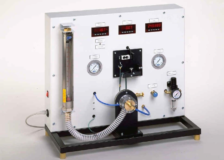
Sci-tech Radial Flow Turbine Model FM 24 includes a turbine rotor fitted with four nozzle-shaped exits. The rotor is mounted in a transparent housing. The air flows through the exit nozzles of the turbine rotor, expands and accelerates. The ex [...]

